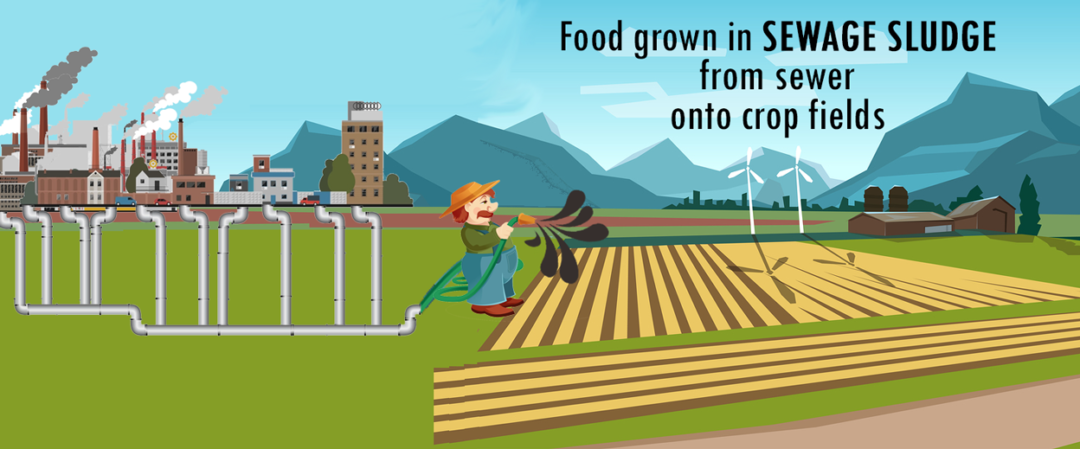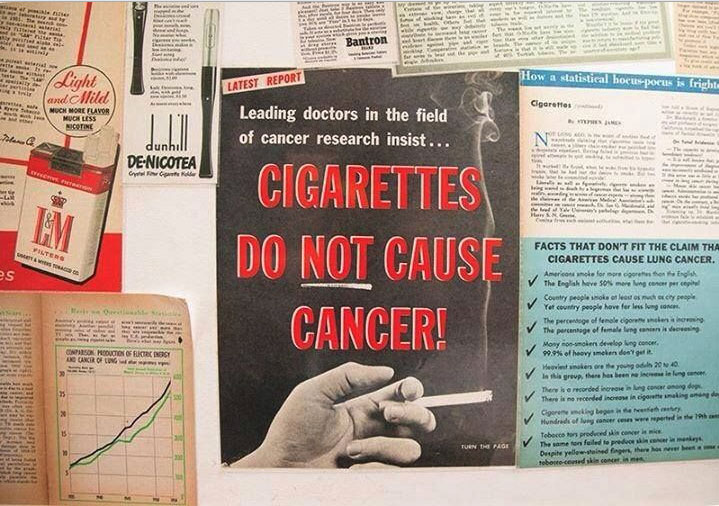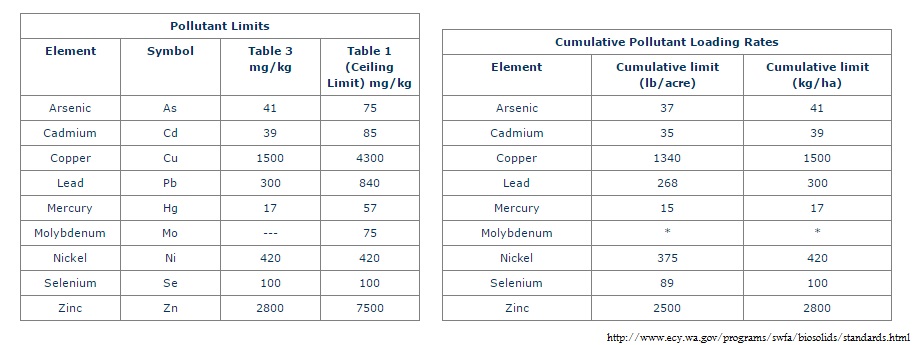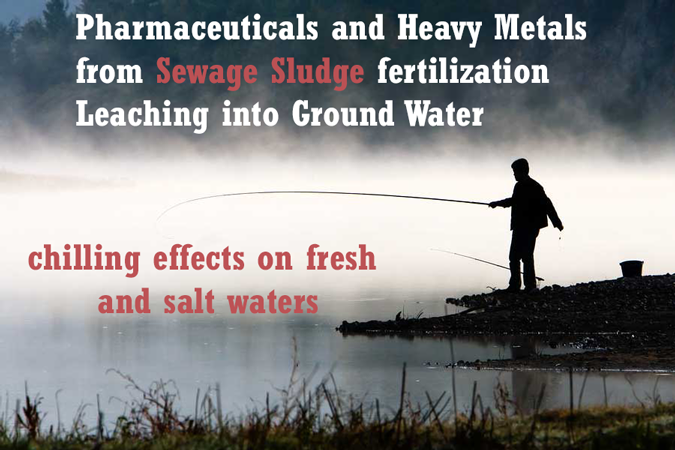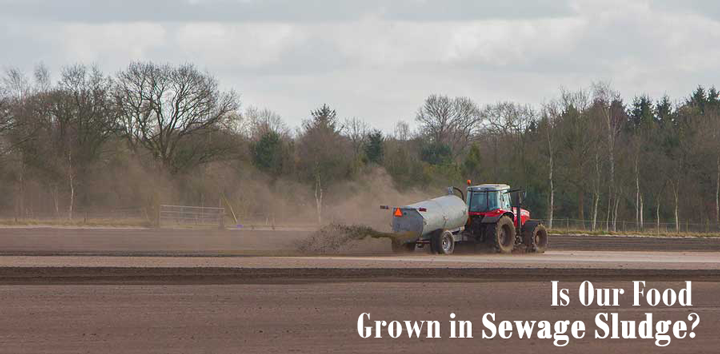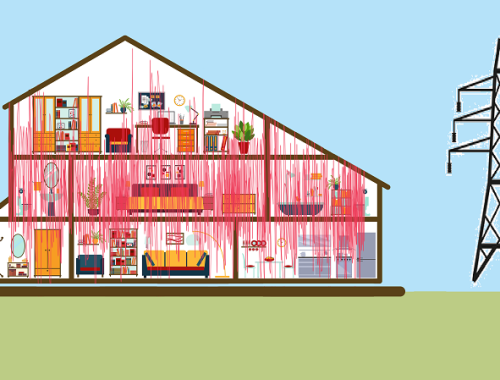Have you seen The Martian? Yuck, he had to grow his food in poop. Turns out we have been doing it for years. Food fertilized with human and industrial waste, or sewage sludge right here on Earth? Sounds surreal but it is not. In fact, it is very common and perfectly legal.
I am “organic” for close to five years now, why is this the first time I am hearing about this? Turns out there is big money involved and there is a beautiful, non-threatening name for it – biosolids. Conventional food is bad enough, read more here – Conventional Food, What’s in it? And the cherry on top is that it’s fertilized with sewage sludge.
The practice of fertilizing with animal and human manure is not new. It has been done for thousands of years. Manure is rich in essential plan nutrients and is a great natural fertilizer. I do not have a problem with fertilizing with natural composted manure from pastured animals fed an organic diet.
I do have a problem with using sewage sludge, a water treatment facility by-product that is full of viruses, germs, heavy metals, radioactive material, dioxins, PCBs, hormones, antibiotics, phthalates, flame retardants and other waste.
Sewage is a mixture of everything flushed down the toilet and poured down the drain in all the homes and commercial and industrial buildings — including hospitals, labs, restaurants, meat packaging plants, funeral homes, auto shops, chemical and pharmaceutical manufacturers — connected to a municipal waste system. (Some industries are required to pre-treat their waste before sending it down the drain.) (source)
Wastewater treatment plants are in the business of cleaning water, not producing clean and non-toxic sludge. The more junk and chemicals they remove from the water, the better job they have done. Many insist the practice of fertilizing crops with sewage sludge is perfectly safe and regulated. But it is not. Remember this:
The process
When sewage reaches the treatment facility it goes through a large filter removing heavy materials – rags, diapers, gravel, sand, etc. It then goes through at least two stages of treatment. “During the first treatment, primary clarification, the rate of flow of the wastewater is greatly reduced and solids settle out by gravity. Then, both the solid and liquid parts are sent on for more treatment.” … “The wastewater then moves on to secondary treatment. This process encourages beneficial bacterial growth which consumes all available food (poop). Once the bacteria have done their job the solids go through a process that kills nearly all the pathogenic organisms commonly found in wastewater, and helps speed the degradation of contaminants sometimes present in wastewater. Next they can be put through another process, which can vary from chemical, heat, or physical treatments to diminish bacteria.” (source) Once the excess water is removed, the end product is either a rich moist soil, dried pellet, liquid or compost.
“Most water treatment facilities produce two classes of biosolids: Class B, which have been treated, but still contain potentially high levels of pathogens, toxins and heavy metals, and Class A, which contain lower levels of pollutants. The EPA deems Class B biosolids acceptable for use as fertilizer on farms (as long as certain buffer requirements and crop harvesting restrictions are followed) and for land reclamation (Kennecott uses them to remediate mine tailings). According to the Centers for Disease Control, Class B biosolids can contain the pathogens that cause typhoid fever, dysentery, gastroenteritis, diarrhea, cholera, hepatitis, meningitis, pneumonia, paralysis, encephalitis and severe respiratory problems.
Class A biosolids, on the other hand, are supposed to contain no detectable levels of pathogens, and they are monitored for nine heavy metals. EPA scientist and outspoken sludge critic David Lewis, Ph.D. says, “Whether these sludges pose little or no risk to public health and the environment depends on what is in the sludge and how it is processed.” He found some batches of Class A to possess “material that was highly irritating to mucus membranes and the respiratory tract.” Class A biosolids are promoted as being safe for unrestricted use in both public spaces and home gardens.” (source)
The processes to make sewage sludge however “do not neutralize heavy metals, pesticides or drug residue. Exacerbating the problem is the fact that the U.S. Environmental Protection Agency requires the compost be tested for only nine pollutants, about 1 percent of the hazardous materials that can be found in sewage. Dioxins, flame retardants and PCBs are not among the chemicals tested.”(source)
Class B biosolids do have buffer restrictions and requirements. According to Washington State Department of Ecology (a proponent of using biosolids) “Buffers are applied near water wells, surface waters, property lines, roadways, and residential dwellings. Public access restrictions range from one month to one year depending on the type of application site. However, Exceptional Quality (Class A only) biosolids used in small quantities by the general public have no buffer requirements, or crop type, crop harvesting, or site access restrictions. When used in bulk, Class A biosolids are subject to buffer requirements, but not to crop harvesting restrictions.”
Did I read that right… “not to crop harvesting restrictions”. Yes, that’s right. This fertilizer can be applied at any time, without any restrictions on harvesting. That lettuce you just brought home, the one your toddler grabbed and took a nice bite out of – that lettuce could very well contain clay dust laced with lead, other heavy metals and an array of toxic chemicals.
Class B biosolids do have some restrictions but they do not make me feel any better. Grains for example can be harvested 30 days after being fertilized with pathogen containing Class B biosolids.
According to National Sewage Sludge Survey, which measures chemical concentrations in land-based biosolid application areas. The results are striking. Out of 84 samples:
-
27 metals are found in virtually every sample with antimony found in no less than 72 samples;
-
Of six semi-volatile organics and polycyclic aromatic hydrocarbons (PAHs), four are found in 72 samples, one is found in 63 samples and one found in 39 samples;
-
Of 72 pharmaceuticals, three (i.e. ciprofloxacin, diphenhydramine, and triclocarban) are found in all 84 samples, nine are found in at least 80 samples;
-
Of 25 steroids and hormones, three steroids are found in 84 samples and six are found in 80 samples; and,
-
All flame retardants, except one, are found in nearly every sample. (source)
Metals
EPA focuses and tests only content of heavy metals. It is the only issue regulated. The table below can be found here. According to Department of Ecology for State of Washington, “If any of the pollutant concentrations do not meet Table 3 limits, biosolids applications are limited by cumulative loading limits shown in the Cumulative Limits Table. Cumulative limits specify the highest amount of any pollutant that can be applied to a land application site during its lifetime. There are no restrictions on cumulative loading rates based on pollutants below the Table 3 standard. If any pollutant exceeds the Table 1 concentration limits, the material does not meet the criteria for biosolids and cannot be applied to the land.”
Lets take lead for example. A heavy metal that does not biodegrade and only bio-accumulates. Lead is toxic to humans.
A piece of lead as small as a grain of sand is enough to poison a child.” – Center for Disease Control
Yet according to a table above, a 1 kg sample of biosolids could contain 300 mg of lead. According to Physics Factbook, depending on a variety of factors, a grain of sand is 0.17 – 23 mg. What is even scarier is that if a sample is ‘exceptional quality’, there are no limits to how many times and how often it can be applied to the same piece of land.
A sample can have all sorts of heavy metals levels up to Table 3 amounts and be considered ‘exceptional quality’; it will not be subject to any other regulations. Now, if a sample contains more lead (up to 840 mg/kg), it is considered non-exceptional quality and is subject to the Cumulative Pollutant Loading Rates. That means if a sample meets all heavy metal requirements but Lead is over 300 mg/kg, but under 840 mg/kg, that sample is subject to a maximum of 268 lb of allowed lead per acre for lifetime of the said land. This process repeats for every heavy metal on the list, all must be under Table 3 levels to be considered ‘exceptional quality’ biosolids and under Table 1 limits to be allowed for biosolids use as fertilizer.
Would you plant your backyard garden in soil you knew contained traces of lead? Probably not. But our food is fertilized with a compost that contains lead among other metals. We all know lead, cadmium and mercury are toxic, persistent bio accumulative materials. These does not break down or dissipate. These can only accumulate and we keep spreading them on our farm fields, in some cases with no regulation. Going back to lead; lead has a half life of about 53,000 years.
Spreading biosolids or sewage sludge on country’s farm fields is a fairly recent practice, relatively little is known about the effects. One problem is “Some crops are more likely than others to absorb non-nutrient toxic substances from soils. For example, fruits and grains can absorb lead, and lettuce, corn and wheat can absorb cadmium from soils. This means that our food supply is at risk of contamination by toxic substances that could threaten human health.”(source)
In addition, lead binds to clay particles and some warn that there may be high concentrations of lead on surface or leafy vegetables and root crops.
Cadmium in soils is not much better; according to Stanford University, “The fact that highly weathered soils are somewhat depleted in Cd suggests that greater quantities of Cd are removed by crops and leaching than are added through fertilization and atmospheric deposition.” And according to this book, “The Agency for Toxic Substances and Disease Registry cites research showing that cadmium tends to accumulate in plant leaves, and therefore is more risky, especially for leafy vegetables grown on contaminated soils. Tobacco, lettuce, and spinach, are known to be particularly prone to cadmium absorption.”
While researching, I have seen studies with conclusions that say the practice of spreading sewage sludge on farm fields seems to be safe. There are a variety of experiments done that show that some or little is absorbed and sometimes even no heavy metals are absorbed. Do not be fooled, things are not so simple. You see, going back to cadmium, “Concentrations of Cd in food chain crops vary substantially within and among species. Research conducted during the past has demonstrated that the variations observed are due to differences in the Cd concentrations present in the soil, differences in the growth conditions among the regions where the crops are grown, differences in the cultivars of a particular crop, and differences in soil chemical and physical properties.” (source)
In other words, there are many variables. Different varieties of same plant, soil chemical properties, soil pH and other factors significantly affect absorption rates of heavy metals. A farmer could not possibly predict all of these factors.
The chemical property or form of the heavy metal is also a factor. There are a few papers like this one looking at mercury and other metals uptake by plants; and per page 3, mercury uptake is happening and in this case was concentrated in the tomato’s root system. But it is not just soil contamination and plant uptake that are the issues. An interesting excerpt from a study that states sewage sludge is perfectly safe to use on farm land: “The form of the mercury is what determines how dangerous it is. So, a very small amount of methyl mercury in fish was enough to cause terrible birth defects to children whose mothers ate the contaminated fish. However, very high (up to 50%) concentrations of mercury in dental amalgam is not considered to be a hazard. Mercury will only methylate under highly anaerobic (without oxygen) conditions. In your mouth highly anaerobic conditions would be indicative of a much more acute problem then any caused by mercury: it would mean that you had stopped breathing. It is only when mercury enters an environment like the ocean that it is likely to transform into methyl mercury and become a potential hazard. Even here, it is only when the fish consume the mercury and store it in their fatty tissue and then people eat the fish that the mercury becomes a hazard.” (For the record, amalgam or mercury fillings are very dangerous, should not be used and must be safely removed to avoid complications. Click here to find a mercury-safe dentist that is trained in safe amalgam removal)
Ground Water Contamination
Agricultural runoff and heavy metals leaching into ground water is a serious concern. “The overall health of the nation’s waterways has declined dramatically over the last quarter-century. Forty percent of our rivers, lakes, and estuaries are still too polluted for safe fishing or swimming. Agricultural runoff is a common cause of waterway pollution. A 1998 U.S. EPA report found that metals are the second most common pollutants found in lakes, ponds, reservoirs, and estuaries. In fact, agriculture is the industry most responsible for lake pollution. The introduction of toxic substances from fertilizers to agricultural environments will only add to their concentrations in waterways that state and federal agencies are working to make safe for fishing and swimming.”(source)
Some studies have found progestins (found in birth control pills) and therefore sewage sludge affect gene expression in early development in zebrafish. In addition these affect the endocrine system of said fish and affects fish fertility. Further, “The occurrence of intersex fish, where male reproductive tissues show evidence of feminization, have been found in freshwater systems around the world, indicating the potential for significant endocrine disruption across species in the ecosystem. Estrogens from birth control medications in wastewater treatment plant effluent have been cited as the likely cause.”(read published study)
“Some studies have shown that certain pharmaceutical compounds may interfere with hormonal pathways in aquatic organisms. Additionally, bioaccumulation of diclofenac in animal tissue has been shown in some studies, which indicates that it has the potential to travel through trophic levels. If such is the case, bioaccumulation could lead to exposure of more organisms than those found only in aquatic environments.”(source)
This is already happening. This chilling report found “Eighty-five percent of male smallmouth bass tested in or nearby 19 National Wildlife Refuges in the U.S. Northeast had signs of female reproductive parts, according to a new federal study.” … and “27 percent of male largemouth bass in the testing sites were intersex.” This is happening in our countries protected waters. How far away is the day you tell your child that fishing is dangerous because the fish is toxic.
Fresh water as well as salt water are affected. According to National Geographic, seafood may be gone by 2048. This “is tightly linked to declining water quality, harmful algal blooms, ocean dead zones, fish kills, and coastal flooding.”
Pharmaceuticals
The only guidelines the EPA issues are on 9 heavy metals. Everything else is fair game.
Several studies show detectable and sometimes extremely high levels of antibiotics, analgesics, anti-inflammatory drugs, beta-blockers, anti-psychotics and illegal drugs. This European study found that “some PPCPs showed strong leaching potential to groundwater after 6 months average rainfall, whilst others displayed higher retention behaviour and showed the potential to concentrate in soils with added exposure.” And this Nigerian study found 12 pharmaceutical substances present in the sludge with four having concentrations exceeding “ecotoxilcological predicted no-effect concentrations. …). In industrial, domestic, and hospital sewage sludge, nine different pharmaceutical substances were detected with the NSAID diclofenac present in all samples at concentrations of up to 1100 µg/kg dry weight, exceeding the highest measured concentration of 560 µg/ kg reported in sludge samples worldwide.” Very little information is available on how these pharmaceuticals are affecting crops grown in them.
This study shed a little bit of light on crop effects. They compared watering plants with wastewater and fertilizing with biosolids. Samples of soil and soy bean plant tissue were “analyzed for three different types of pharmaceuticals – carbamazepine (an anticonvulsant), diphenhydramine (a histimine) and fluoxetine (an antidepressant) – and two anti-microbial compounds – triclosanand triclocarban, which are typically found in anti-bacterial soaps and toothpastes.”
“With the exception of fluoxetine, all of the chemicals accumulated in the plant tissues from exposure to both wastewater and biosolids. The greatest accumulation was observed for carbamazepine, triclosan and tricloarban. Concentrations increased in the plant tissues up to six times the levels present in the biosolid amended soils. Greater accumulation of all chemicals was found in the soybeans exposed to soils treated with biosolids; however, this may be partially due to the naturally higher concentrations of these chemicals in the biosolids versus the wastewater.
The two anti-microbial chemicals triclosan and triclocarban were found to have the highest concentrations in the leaves of the soybean plants relative to the root, suggesting these chemicals had a greater potential to move upward in the plant tissues. This has implications for exposure since most livestock feed upon the leaves and upper part of the plants, as opposed to the roots.
In addition, uptake of these chemicals from roots to leaves was greater for the plants exposed to the wastewater, not the biosolids, suggesting differences in remobilization of the chemicals based on route of exposure.” (click to read)
Another recent study confirms “Pharmaceuticals and pharmaceutical residues present in sludge could have significant consequences due to land application of sludge on agricultural fields, where chemicals may partition into soils and be taken up by plants. The effects of uptake by plants are not yet fully understood, but some pharmaceutical compounds have been detected in plant tissues.” The degree of plant uptake varies widely. The type of pharmaceutical compound, membrane permeability, soil conditions, soil pH, type of crop (leafy, root, etc) and other factors play major role in plant uptake. In some cases the uptake rate is alarming. “Antibiotics, particularly sulfonamides and trimethoprim, have been shown to be readily taken up into plants, where they are found in highest concentrations in the roots.” … Anticonvulsant “carbamazepine was detected in stems and leaves at concentrations up to about 1,300 µg/kg in peppers, 800 µg/kg in collards, and 600 µg/kg in lettuce.”
There is a growing threat of antibiotic resistance in soils. Repeated low dose applications of antibiotic containing biosludge has not been investigated. And certainly nobody knows about the long term multigenerational effects of this practice. “Antibiotics in soils have gained the attention of the scientific community because of their interference with the activity of naturally-occurring soil microbes. Pala-Ozkok et al. showed that erythromycin obstructed substrate binding sites for microbes, inhibiting their activity. The toxic dose of antibiotics for microorganisms is far lower than that for higher organisms, meaning that the potential for pharmaceutical toxicity is higher. This is significant because soil microbes are often responsible for breaking down xenobiotics, such as other pharmaceutical Taylor-Smith 2015 26 compounds. Without this microbial activity, pharmaceuticals may accumulate in greater amounts. Furthermore, fluoroquinolones have been shown to bioaccumulate in soil microbes.”(source)
Other Chemicals
To reiterate, the purpose of a waste water treatment facility is to produce clean water, not clean sludge. There are hundreds if not thousands of toxic, carcinogenic, endocrine system disrupting, persistent chemicals that go down the drain from residential homes, hospitals, funeral homes, car washes, industrial production. Pesticides, Phthalates, PCBs, dioxins, flame retardants and their unintended by-products or even new chemicals created by co-interaction. Very little is known about their effects on humans and on farm land soils. Even less is known about those chemicals interaction with each other in the environment, soils and our ground water.
Nothing is tested before application. According to Environment Working Group, ” in a series of investigative articles, The Seattle Times has documented the nationwide use of cadmium, lead, arsenic, dioxins, radionuclides and other hazardous waste in fertilizer. Tests by the State of Washington found that some fertilizers contained very high levels of dioxin — 100 times higher, in fact than the level allowed for treated Superfund sites in the state.”
In an extreme case, there is the Denver story:
Anderson, a professor in the Environmental Studies Program and Ethnic Studies Department at the University of Colorado at Boulder, has been following hazardous waste issues for 20 years, having started out in the 1980s with the National Toxics Campaign. For the past four years, she has also been following a sickening flow of heavy metals, nerve gas residue, dioxin, PCBs, pesticides, industrial solvents, petroleum oils, and radioactive plutonium, americium, radium and strontium-90 as it makes its way from the Lowry Landfill Superfund site southeast of Denver, down 17 miles of pipe, and into the Denver Metro sewage treatment plant. There it joins the city’s domestic and industrial waste, and comes out the other end as sludge or, as it is euphemistically known, “biosolids.”
This sludge is being used to grow wheat and other crops that have been sold to make, among other things, “specialty baked goods” for bakeries across the country. “They are indeed very special baked goods,” says Anderson. “They’re grown in sludge incorporating Superfund site wastes from a dump where nuclear wastes were unloaded for years. Here, plutonium and other wastes from our nation’s weapons of mass destruction program — with the issuance of this precedent-setting permit — have become acceptable additives for our nation’s food supply.”
The sewage district has no treatment capability for hazardous, and certainly not nuclear, waste,” says Anderson. “They screen out the big pieces, add some chemicals to neutralize the biologic material and heat it — none of which has any effect whatsoever on the large volume of compounds coming from the Lowry site. This is just a means of dodging clean-up costs and skirting liability for Superfund waste.”
Conclusions and Solutions
Buy organic. Local organic is even better. Aside from cross-contamination or mislabeling concerns, it is the best option. USDA Organic certification forbids use of sewage sludge on certified organic crops, grown locally or imported.
To my knowledge, Whole Foods chain refuses to buy and sell crops fertilized with sewage sludge, certified organic or conventional.
A neat resource is Scorecard. They have a searchable database that shows who is polluting your neighborhood; what pollutants, how many pounds and where.
Unfortunately I don not have a solution to this growing problem. My suggestion would be to reserve biosolids use for carefully evaluated areas such as tree farms. Installing proper drainage or shielding so the ground water remains uncontaminated is essential. Until then, certified organic foods are our best bet.

